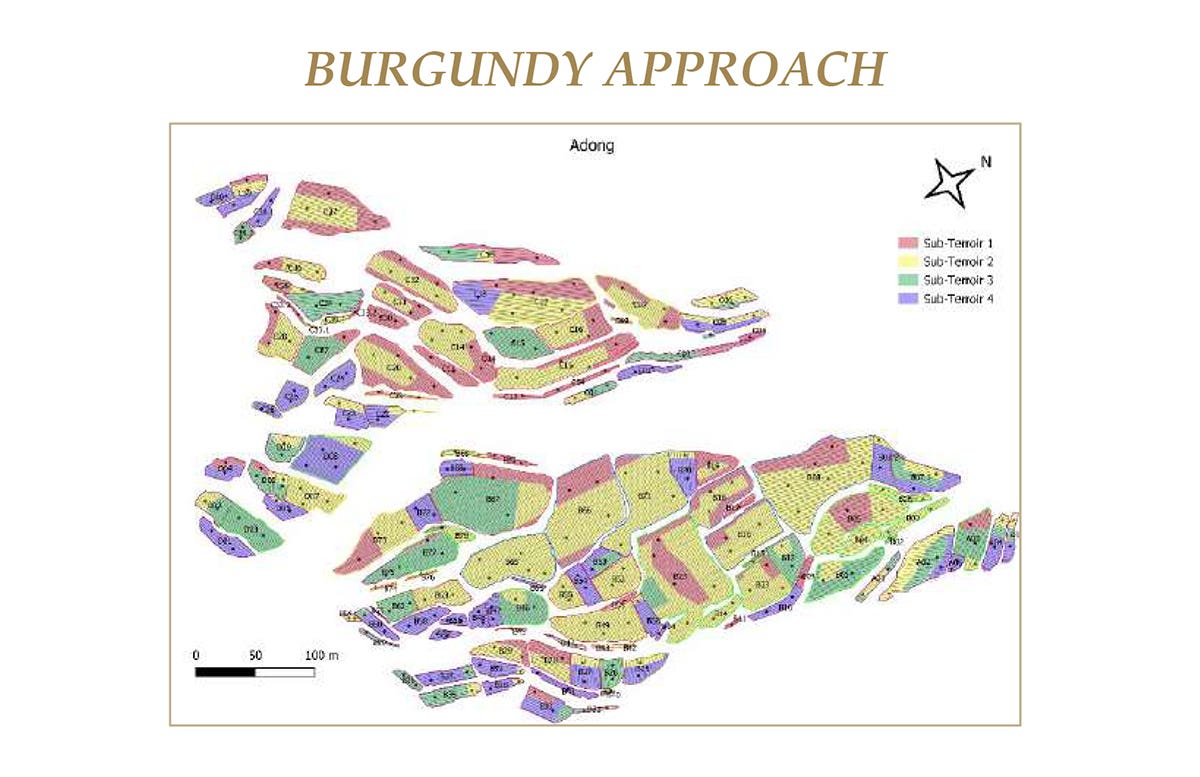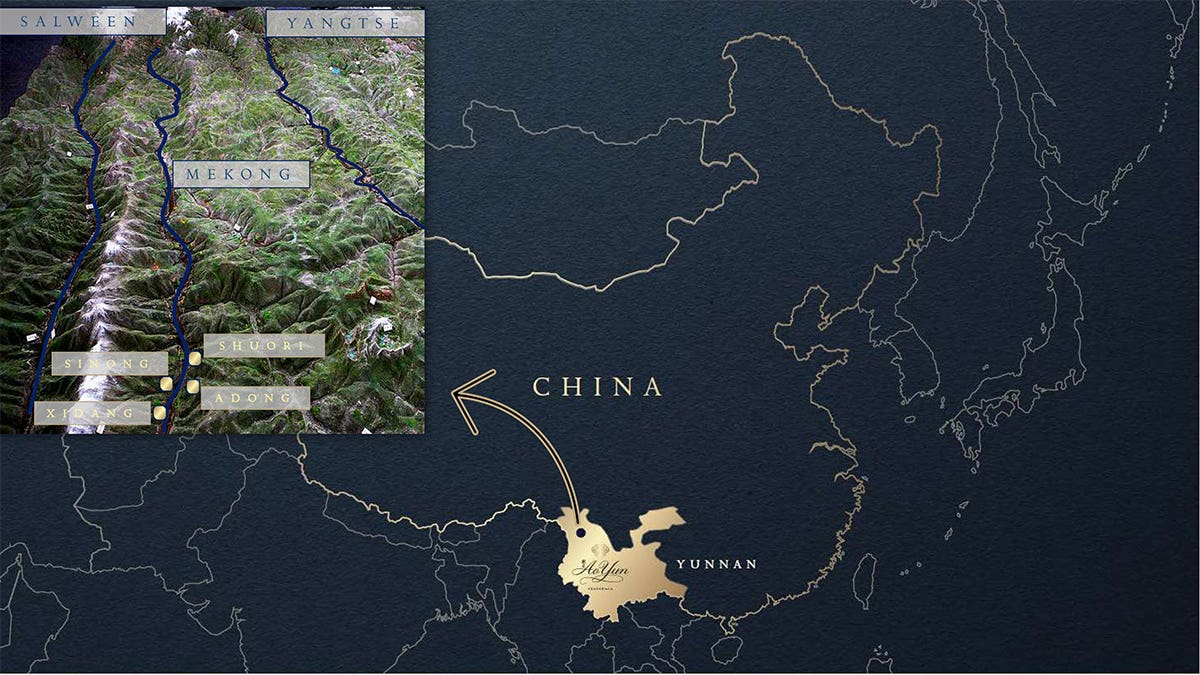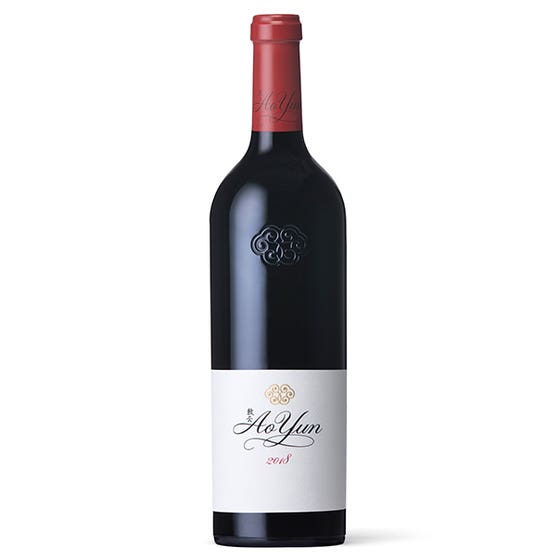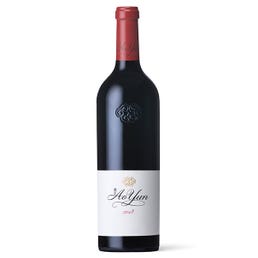敖云香格里拉 Ao Yun Shangri-La 2020
• Domaine: Moët Hennessy Shangri-La
• Origin: Yunnan, China
"... velvety & fruity, elegant, complex ... "
Ao Yun is an ambitious project by LVMH to create a unique, world-class wine estate in an ideal but new environment. The famed Australian winemaker, Dr. Tony Jordan, was commissioned to find such a place. He found his way to the foothills of the Himalayas in Yunnan, near the legendary and remote villages of Shangri-La. There he found not only conditions that reminded him of Bordeaux but also the remnants of a wholly forgotten series of vineyards planted with Cabernet Sauvignon and Cabernet Franc which had been introduced by French missionaries in the 1800s. The weather station he implemented locally in 2010 has provided 12 years of weather data to show the Shangri-La climate is a hybrid one between Bordeaux and Napa in term of temperature/sun/rain depending on season.
Located at an altitude between 6890 and 8530 feet (2100 to 2600 meters, 500 meters of variation), Ao Yun's vineyards are spread out on both banks of the Mekong River. The mountainous region is spectacular, with unique vineyards from the valley floor to mountain high. Ao Yun leases 314 blocks, with 727 tiny sub-parcels identified, totaling 28 ha from 120 local families in 4 villages of the Upper Mekong Valley. There are different soil types and climates in each village due to different altitudes, sun exposure, wind exposure, landslide and river deposits. With such variety of soil and finely identified parcels, Ao Yun takes the Burgundy Approach to cultivate each parcel, as shown here in a map from Adong, one of the four villages producing grapes for Ao Yun:


After harvesting and micro-vinification, the winemaker conducts blind tastings from each parcel/terroir, before using the Bordeaux art of blending to create the Ao Yun Grand Cru. In the true Bordeaux fashion, the blending is different from year to year.
In certain years, the wine from each individual village is bottled under its own name: Shuori (说日), Adong(阿东), Sinong(斯农), Xidang(西当).
Ao Yun(敖云)means “above the clouds.” From the video presented by the estate, one can almost tell there is something weightless and ethereal about the place and the wine it produces.
Tasting Notes
"The resculpting of Ao Yun over the past few years continues here, wiith medium to full intensity ruby colour coupld with nuanced fragrant spices of rosemary, bay leaf and sage that burst out of the glass. Spring flowers, turmeric, bright berry fruits and a slow and steady lift. Feels like an entirely different expression of classic Bordeaux varieties (Syrah aside) that highlights the impact of altitude, and just brings a ton of personality to the glass. Maxence Dulou winemaker. Shorter ageing also, in a bigger variety of containers - 30% new barrel, 30% neutral barrel, 40% stoneware jar for 12 months followed by 5 months in stainless steel vats. Only 59% of grape harvested entered in Ao Yun, with the rest going into the new village wines, and in this vintage 72% of the blend Ao Yun blend is from the two coolest villages of Adong (2600m) and Shuori (2500m)." - Jane Anson, (02/16/2024), Ratings: 97, Drink: 2026-2038
"Smells wild and strong on the nose, some elements of blackcurrants, damsons and plums, but darkly cool not overly ripe. The meaty, wild Syrah elements come through (even at just 6% of the blend) with a touch of florality from the Cabernet Franc (19%). Really vivid bright purple in the glass too, almost fuschia pink on the rim. Thick and unctuous, this has weight and body with a fleshy, plump texture, almost chewy but bouncy too so you get strength and clear structure but with lift and brightness from the pure fruit and high acidity. I love the styling, feels controlled and purposeful. Suave but still muscular, confident. It's a big wine with plenty to say. Very long and keeps the intensity all the way through. I like the cool mint eucalyptus note on the finish reminding you it's full of Cabernet. I'd still struggle to say where it's from but it's very good. 6% Syrah and 5% Petit Verdot complete the blend." - Georgina Hindle, Decanter, (02/16/2024), Ratings: 96


Footnotes for Wine Geeks
The team in charge of Ao Yun is led by French winemaker, Maxence Dulou. They practice a cousu main (tailor-made) vineyard approach to express the terroir. A few noticeable points:
- Shoot accuracy for customized fruit thinning: instead of aiming for a yield target per hectare (common practice), MH Shangri-La has optimized quality down to a single shoot. Based on 35 terroirs and 5 vine types, the team only keeps 100 to 200g of grapes per shoot.
- An accurate weather forecasting system: years of experimentation and newly adopted AI system to facilitate better decision making based on accurate weather forecast
- Pure soils and fruit: The vineyards adopted European organic farming standards since 2013. To harvest the purest expression of terroir, the team included an unheard-of technique of rinsing the grapes twice while still hanging on the vine prior to harvest. This method ensures that any residue, even organic, is removed from grape skins.
| LWIN | 1409064 |
|---|---|
| Stock Status | In Stock |
| Vintage | 2020 |
| Shipping Weight | 3.000000 |









